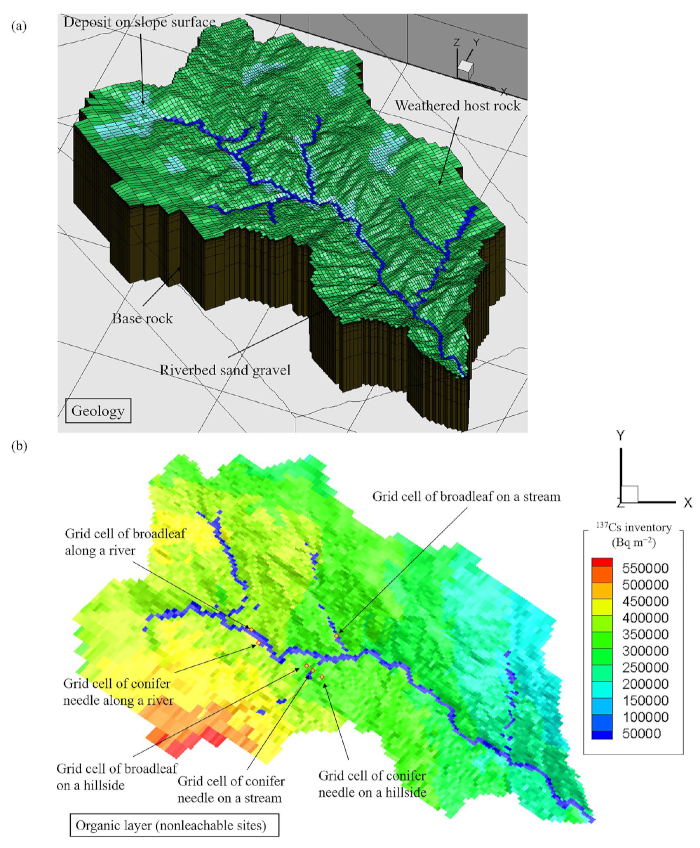Watershed-Geochemical Model to Simulate Dissolved and Particulate 137Cs Discharge From a Forested Catchment
Published:

Abstract
Measurements in forest catchments in Fukushima Prefecture indicate that cesium-137 (137Cs) leaching from forest litter affects dissolved 137Cs levels in river water. Existing simulations have been unsuccessful in reproducing this phenomenon due to mechanistic limitations in the models connecting the forest ecosystem and the river system. This paper introduces a new coupled watershed-geochemical model to address this. We connected a forest ecosystem compartment model to the 3D watershed model General-purpose Terrestrial Fluid-Flow Simulator to describe 137Cs transfer between forests and the river system. The compartment model included nonleachable and leachable 137Cs sites in the organic layer. The latter sites model how leachable 137Cs stocks increase with ambient temperature owing to decomposing organic matter. The model was tested by simulating dissolved and particulate 137Cs discharges from a forested catchment upstream of the Ohta River, Fukushima Prefecture. The results for dissolved 137Cs concentrations in river water for 1 January 2014, to 31 December 2015, correlated well with catchment measurements. The simulations reproduced dissolved 137Cs concentration peaks that occurred during three typhoon events and the seasonal variations under baseflow conditions. The results support the theory that leaching from the organic layer in forests is a primary factor affecting river water dissolved 137Cs concentrations. The wider contribution of this study is it introduces a coupled watershed-geochemical model, applicable not only for evaluating the dynamics of 137Cs, but also those of other substances that adsorb onto sediments and soil particles, and leach from forest organic matter.
K. Sakuma, S. Hayashi, K. Yoshimura, H. Kurikami, A. Malins, H. Funaki, H. Tsuji, T. Kobayashi, A. Kitamura & K. Iijima
Water Resources Research 58 (8), e2021WR031181 (2022)
DOI: 10.1029/2021WR031181
PDF: download
